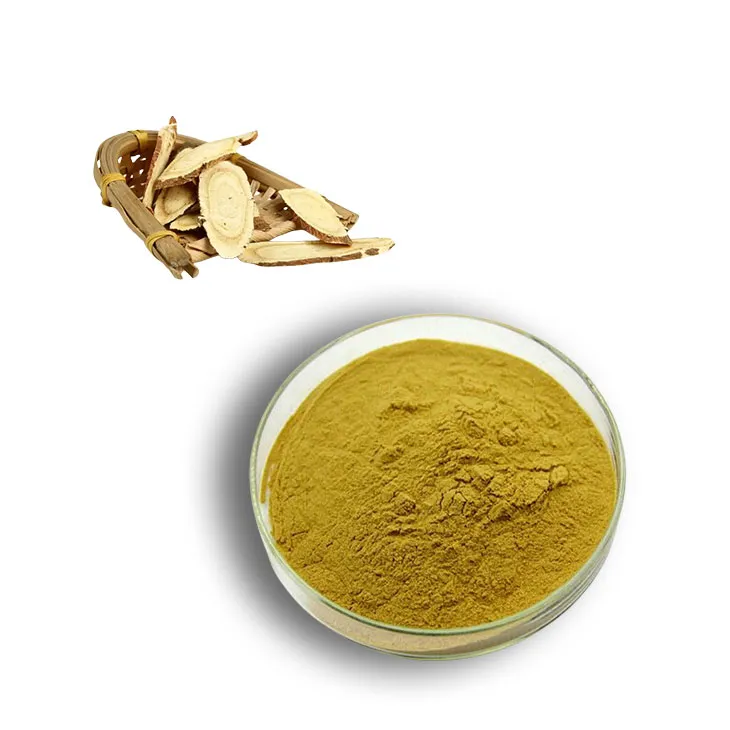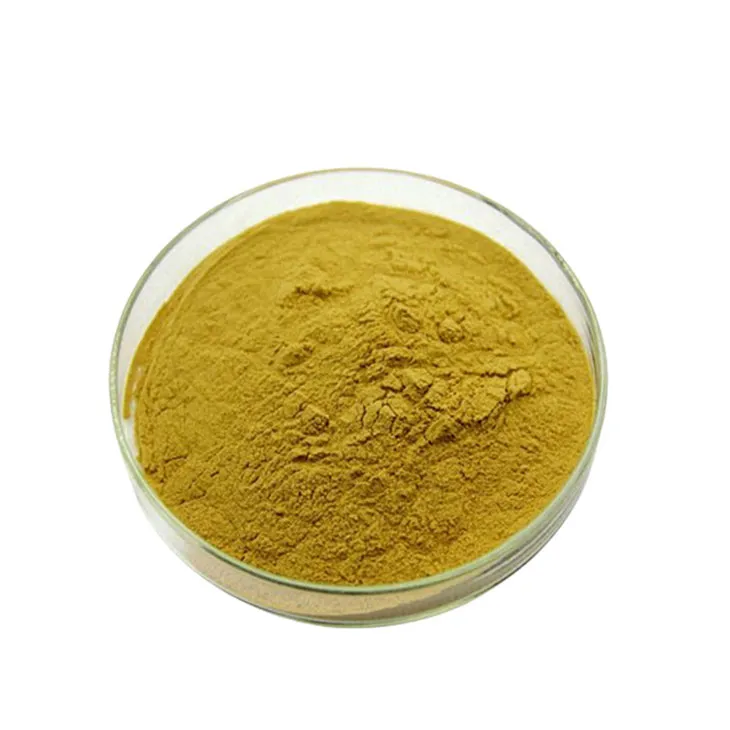- 0086-571-85302990
- sales@greenskybio.com
The process of extracting the main components of licorice root from licorice root extract powder.
2024-12-02

1. Introduction
Licorice root has been widely used in various fields for centuries. Licorice Root Extract Powder serves as a convenient form for further extraction of its main components. These main components are highly valued for their diverse biological activities and applications. In traditional medicine, they are often used for their anti - inflammatory, antioxidant, and immunomodulatory properties. In modern industries, they are also used in the food, cosmetic, and pharmaceutical sectors. Understanding the process of extracting the main components from Licorice Root Extract Powder is crucial for maximizing their utilization.

2. Preparation of Licorice Root Extract Powder
2.1 Quality Assurance
Before starting the extraction process, it is essential to ensure the quality of the licorice root extract powder. The powder should be sourced from reliable suppliers. It is necessary to check for factors such as purity, absence of contaminants, and proper drying. Quality control measures should be in place to guarantee that the powder meets the required standards. This may involve testing for heavy metals, pesticides, and microbial contamination.
2.2 Homogenization
To ensure a uniform extraction process, the licorice root extract powder needs to be homogenized. This can be achieved through mechanical means such as grinding or sieving. Grinding the powder to a fine consistency helps to increase the surface area available for extraction. Sieving can remove any lumps or large particles, ensuring that the powder is of a consistent particle size.
3. Extraction Methods
3.1 Maceration
Maceration is one of the simplest and most commonly used methods for extracting the main components from licorice root extract powder. In this method, the powder is soaked in a suitable solvent.- The choice of solvent is crucial. Commonly used solvents include water, ethanol, or a mixture of both. The solvent should be able to dissolve the main components effectively while being relatively safe and easy to handle.
- The powder - solvent ratio also plays an important role. A typical ratio may range from 1:5 to 1:10 (powder:solvent by weight). This ratio can be adjusted depending on the nature of the powder and the desired concentration of the extract.
- The soaking time can vary from a few hours to several days. Longer soaking times generally result in more complete extraction, but it also increases the risk of microbial growth. A common soaking time is around 24 - 72 hours.
- During the maceration process, gentle agitation may be applied occasionally to enhance the mass transfer between the powder and the solvent. This helps to ensure that the main components are evenly dissolved in the solvent.
3.2 Soxhlet Extraction
Soxhlet extraction is a more efficient method compared to maceration, especially for extracting components with low solubility.- The Soxhlet apparatus consists of a flask, a condenser, and a thimble. The licorice root extract powder is placed in the thimble.
- The solvent is heated in the flask. The vapors rise, pass through the condenser, and condense back into liquid, which then drips onto the powder in the thimble.
- As the solvent accumulates in the thimble, it extracts the main components from the powder. Once the solvent in the thimble reaches a certain level, it siphons back into the flask.
- This process is repeated continuously for a certain period, usually several hours to a day or more. The continuous cycling of the solvent ensures a high degree of extraction efficiency.

4. Refinement of the Extract
4.1 Solvent Removal by Distillation
After the extraction process, the obtained extract contains the main components along with the solvent. Distillation is a commonly used method to remove the solvent.- Simple distillation can be used for solvents with a relatively large difference in boiling points from the main components. The extract is heated, and the solvent vaporizes first. The vapors are then condensed and collected separately.
- Fractional distillation may be required for more complex mixtures. This method takes advantage of the different boiling points of the components in the extract to separate them more precisely.
4.2 Crystallization
Crystallization is an effective method for separating the main components in a pure form.- The extract is first concentrated by evaporating some of the solvent. This increases the concentration of the main components.
- Then, the concentrated extract is cooled slowly. As the temperature decreases, the solubility of the main components in the remaining solvent decreases, and they start to crystallize out.
- The crystals can be separated from the mother liquor by filtration or centrifugation. The purity of the crystals can be further improved by repeated crystallization processes.

5. Applications of the Main Components
5.1 In Traditional Medicine
The main components of licorice root have been used in traditional medicine for a long time.- They are often used to treat respiratory problems such as coughs and sore throats. Their anti - inflammatory and expectorant properties help to relieve the symptoms.
- For digestive disorders, they can soothe the stomach and intestines. Licorice root components may help in reducing inflammation in the digestive tract and promoting the healing of ulcers.
- They are also used in traditional medicine for their immunomodulatory effects, helping to boost the body's immune system.
5.2 In Modern Industries
In modern industries, the main components of licorice root find diverse applications.- In the food industry, they are used as natural sweeteners, flavor enhancers, and preservatives. Licorice root extract can add a unique flavor to food products and also has antimicrobial properties that can help in food preservation.
- In the cosmetic industry, they are used in skin - care products. Their antioxidant and anti - inflammatory properties make them suitable for treating various skin conditions such as acne, eczema, and aging skin. They can also be used in hair - care products to improve the health of the hair.
- In the pharmaceutical industry, they are used as raw materials for the development of new drugs. Their diverse biological activities provide a basis for the discovery of new drugs for treating various diseases such as cancer, diabetes, and cardiovascular diseases.
6. Conclusion
The process of extracting the main components from licorice root extract powder involves several important steps, from powder preparation to extraction and refinement. Different extraction methods such as maceration and Soxhlet extraction offer different levels of efficiency. The refined main components have wide - ranging applications in both traditional medicine and modern industries. Continued research in this area can lead to better extraction techniques and more extensive utilization of the valuable components of licorice root.
FAQ:
What are the main components in licorice root?
Licorice root contains various main components such as glycyrrhizin, flavonoids, and polysaccharides. These components contribute to its unique properties and wide applications.
Why is proper preparation of licorice root extract powder important before extraction?
Proper preparation of the powder is crucial as it ensures quality and homogeneity. This helps in consistent extraction results, allowing for a more accurate and efficient extraction of the main components.
How does maceration work in the extraction of licorice root main components?
Maceration involves soaking the licorice root extract powder in a solvent. During this process, the main components gradually dissolve into the solvent over a certain period, facilitating their extraction.
What are the advantages of Soxhlet extraction compared to maceration in this context?
Soxhlet extraction is more efficient. It continuously recycles the solvent, which can extract a larger amount of the main components from the licorice root extract powder compared to maceration in a shorter time.
Why are the main components of licorice root useful in modern industries?
The main components of licorice root have unique physiological activities. For example, glycyrrhizin has anti - inflammatory properties, and flavonoids have antioxidant effects. These properties make them valuable in various modern industries such as pharmaceuticals, cosmetics, and food.
Related literature
- The Chemical Components and Pharmacological Effects of Licorice Root"
- "Advanced Extraction Techniques for Licorice Root Main Components"
- "Applications of Licorice Root Main Components in the Pharmaceutical Industry"
- ▶ Hesperidin
- ▶ citrus bioflavonoids
- ▶ plant extract
- ▶ lycopene
- ▶ Diosmin
- ▶ Grape seed extract
- ▶ Sea buckthorn Juice Powder
- ▶ Beetroot powder
- ▶ Hops Extract
- ▶ Artichoke Extract
- ▶ Reishi mushroom extract
- ▶ Astaxanthin
- ▶ Green Tea Extract
- ▶ Curcumin Extract
- ▶ Horse Chestnut Extract
- ▶ Other Problems
- ▶ Boswellia Serrata Extract
- ▶ Resveratrol Extract
- ▶ Marigold Extract
- ▶ Grape Leaf Extract
- ▶ blog3
- ▶ blog4
-
The best lemon juice powder in nature.
2024-12-02
-
Organic Vitamin K2 Powder Suppliers
2024-12-02
-
Bulk purchase of L - tyrosine.
2024-12-02
-
Vitamin K2 Manufacturers
2024-12-02
-
100% Pure Natural Rutin.
2024-12-02
-
Chinese Citrus Bioflavonoid Suppliers.
2024-12-02
-
Panax Ginseng Leaf Extract
2024-12-02
-
Fenugreek Extract Powder
2024-12-02
-
Rose Hip Extract
2024-12-02
-
Selenium yeast
2024-12-02
-
Phyllanthus Emblica Extract
2024-12-02
-
Hedyotis Diffusa Extract
2024-12-02
-
Eyebright Extract
2024-12-02
-
Peppermint Extract Powder
2024-12-02
-
Tongkat Ali Extract Powder
2024-12-02
-
Horse Chestnut Extract
2024-12-02





















